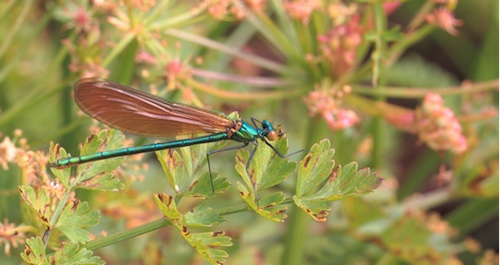![]()
The nature reserve was purchased in 2001 with a grant from the Heritage Lottery Fund and over the last 14
years the owners, Cornwall Wildlife Trust and Cornwall Bird Watching and Preservation Society, have worked along side partners to enhance and restore habitats for the benefit of rare and important wildlife. This work has created an amazing nature reserve and this project will focus on involving local people and communities so they can gain access to understand and enjoy the heritage at Windmill Farm.
Windmill Farm Nature Reserve is 83 hectares in size and approximately one quarter of this area is lowland
heath. Open heathland is rarer than rainforest. In the UK there is only about 16% of the heathland area that
existed in 1800 but this remnant is still 20% of the whole of the world’s heathlands. Heathlands on the Lizard are unique in that they contain the heather species, Cornish heath, which is rarely found elsewhere. The heathland habitat on the nature reserve is a designated Special Area of Conservation, recognition of its
outstanding international importance. Other designations at the nature reserve include; Site of Special
Scientific Interest, County Wildlife Site, Cornwall National Landscape and Area of Great Scientific Value.
The management of the habitats at Windmill Farm are coordinated through a Higher Level Stewardship
agreement with Natural England. The restoration of the heathlands has involved scrub clearance and grazing with hardy cattle and whilst the heathlands are now considered to be in favourable condition many other new habitats have been created across the nature reserve. On what was once intensively managed dairy pasture there are now hay meadows, fields of sacrificial arable crops for birds, heathland re-creation trials, numerouslightly scraped hollows for wildfowl and waders and carefully designed dragonfly pools.
A summary of the natural heritage of Windmill Farm:
Windmill Farm supports the following nationally important habitats;
- 21 ha BAP Lowland Heathland
- 54 ha of semi improved grassland managed as hay meadows or for heathland recreation
- 4ha of wetland including 30 ponds and scrapes (BAP habitat)
- Approximately 1ha of Cornish Hedges that are of considerable wildlife significance and, should national criteria be established, could be considered of national BAP significance.
Summary of species at Windmill Farm:
A wealth of important species have been recorded at and use the habitats at Windmill Farm. These include
the internationally important marsh fritillary butterfly, hen harrier, peregrine falcon, merlin, golden plover and
Dartford warbler.
- 7 species of BAP butterfly and moth including the nationally and internationally threatened marsh fritillary butterfly
- 17 species of dragonfly and damselfly, including lesser emperor and annual red-veined darter which makes the site a ‘Key Odonata Site’ for Cornwall
 Beautiful demoiselle at Windmill Farm
Beautiful demoiselle at Windmill Farm
- 4 species of BAP reptiles and amphibians (adder, common toad, common frog and common lizard)
- Birds – 8 BAP species (reed bunting, cuckoo, bullfinch, linnet, grasshopper warbler, skylark, song thrush and
- house sparrow), 27 RSPB red or amber listed species (including merlin, kestrel, barn owl, snipe and hen
- harrier)
- Very high botanical diversity with RDB species including; pygmy rush (endangered), Cornish heath, Vigur’s
- eyebright (historical), three lobed crowfoot. Nationally important BAP species present include; camomile,
- yellow century and pale dog violet.
- Nationally Scarce lower plants including pillwort, RDB strawberry stonewort and a BAP lichen (Caloploca
- ardetina) growing on the windmill!
- BAP mammals including current records for otter.

